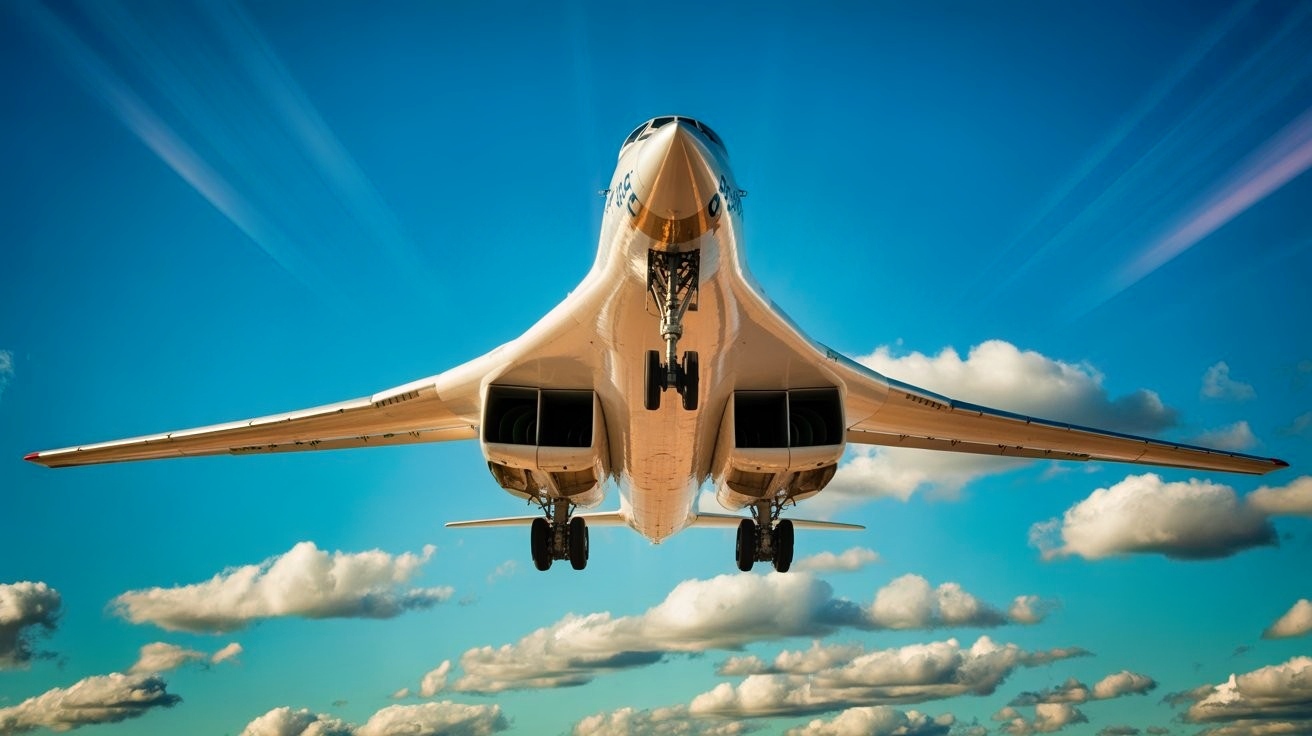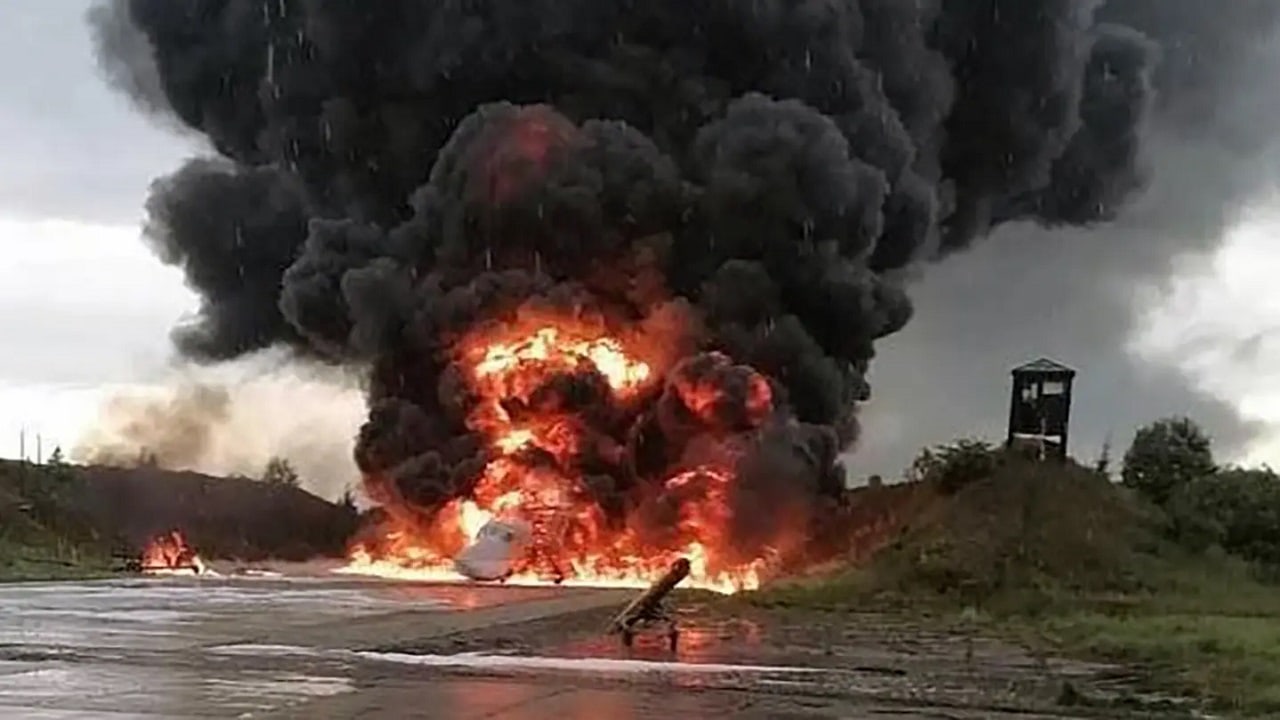Key Points and Summary – Russia has suffered massive aircraft losses in Ukraine, with open-source trackers confirming hundreds of destroyed jets and helicopters.
-The most devastating blow came in Operation Spiderweb, a Ukrainian strike that used AI-guided FPV drones hidden in civilian trucks to hit multiple Russian air bases deep inside Russia.

Tu-160 Bomber. Image Created by Ideogram.

Tu-160 Bomber from Russia. Image Credit: Creative Commons.
-The low-cost drones torched long-range bombers, tankers, and support aircraft worth billions, highlighting a brutal cost imbalance.
-Instead of dogfights, today’s air war is defined by standoff missile shots and expendable drones. Ukraine’s success shows how cheap, attritable systems can deliver strategic effects against legacy air fleets.
Ukraine’s $600 Drones Just Wrecked Russia’s Billion-Dollar Bombers
The number of Russian aircraft lost in Ukraine is staggering.
Oryx, an open-source tracker of visually confirmed equipment losses, pegs Russian aircraft losses of all types at 353 aircraft, including fighter jets, bombers, transport aircraft, helicopters, and other platforms, during the ongoing war in Ukraine.
“This list only includes destroyed aerial assets of which photo or videographic evidence or pilot death notices are available,” Oryx notes. “Therefore,” it adds, “the amount of destroyed and damaged aircraft is likely significantly higher than recorded here.”
While the majority of Russian aircraft losses in Ukraine occurred in the aftermath of Russia’s full-scale invasion in February 2022, Ukrainian air defense has steadily chipped away at Russian aircraft. But one large-scale Ukrainian attack against multiple Russian air bases dealt a significant blow to Russia’s strategic aviation: Operation Spiderweb.
Operation Spider Web
The single most significant blow to Russia’s combat aviation, however, happened on June 1st, when Ukrainian forces targeted several Russian airbases deep within Russian territory.
Using explosive-equipped UAVs hidden inside civilian transport vehicles, Ukrainian forces target Russia’s strategic aviation assets: long-range bombers, tanker aircraft, transport planes, and potentially a pair of airborne early warning and control planes.
Footage of the attack, published by Ukraine’s security service, the SBU, shows Russian aircraft erupting in flames, indicating they were fueled at the time of the attack.
Although the scope of the attack may have been curtailed by an incomplete launch — at least one truck seemingly caught on fire and burned with its explosive cargo onboard — it did catch Russia seemingly unaware.
IISS, a think tank, estimates that Russia lost 12 aircraft, 12 of which were destroyed and two damaged. Ukrainian sources also claim that seven other planes were damaged, but IISS was unable to verify their authenticity.
Using Russia’s own mobile network, SIM card-equipped drones, each flown by a human pilot, attacked Russian aircraft seemingly unopposed.
To cope with the time delay given the long distances of the attacks, the drones were equipped with artificial intelligence that allowed the drones to identify Russian aircraft targets and guide the drones to the most vulnerable areas of the airplanes, Ukraine claims.
Aftermath
Ukraine’s Operation Spiderweb leveraged a Ukrainian strength: unmanned, drone-delivered strike capabilities with advanced navigational and terminal targeting technology, against a Russian vulnerability: relatively unprotected, long-range strategic aviation.
One expert explained the cost asymmetry of the attack, commenting that the operation “proved once again that FPV drones, built with inexpensive components and controlled via open-source autopilot systems like ArduPilot, can destroy strategic aircraft worth billions.
These drones, costing $600–1,000, successfully struck aircraft such as the Tu-95MS and Tu-22M3 bombers, worth billions that Russia uses to launch Kh-101 and Kh-22 missiles, respectively.”
Though not as successful as Kyiv had initially hoped, the attack showed that modern warfare is moving away from expensive, exquisite platforms and toward mass-produced, expendable platforms like FPV drones.

Tu-22M3 Ukraine Drone Attack. Image Credit: Twitter Screenshot.
These kinds of assets, in particular, are, as the Ukrainians demonstrated, ripe for integration with navigational aids like the ArduPilot autopilot system used in the attack.
This case shows a growing trend in modern warfare: Mass-produced, attritable systems with limited range or payload can inflict disproportionate strategic damage when combined with creativity and intelligent targeting.”
The War for the Air
Combat aviation has played a very different role in the ongoing war in Ukraine than it has in previous conflicts. Rather than fighting pitched dogfights in the air over Ukraine, neither the Russians nor the Ukrainians have been able to exercise complete air superiority over areas not already under their respective control.
Russia’s air forces dwarf those of Ukraine. While the Ukrainian Air Force has received some F-16 fighter jets from its Western backers, they have not been supplied in sufficient numbers to overcome the aerial stalemate.
Earlier this month, Ukrainian President Volodymyr Zelensky visited Paris to put ink on a deal with his French counterpart, Emmanuel Macron, for up to 100 of France’s Rafale F4 fourth-generation fighter jets.
And while the deal was naturally trumpeted by Ukraine and its supporters, the jets will not be completed until 2035, and their effectiveness will be determined by the timing of their wider rollout within the Ukrainian Air Force and the air-to-air weaponry they are equipped with.
On the Russian side of the equation, Russian fighter and bomber pilots are leveraged as mobile cruise missile launch platforms, used to supplement the unmanned one-way attack drones that Russia launches against Ukrainian cities and towns. But instead of dropping munitions above their Ukrainian targets, Russian aircraft typically launch glide bombs and other weaponry from stand-off distances.
Postscript
Ukraine’s ability to exert control over the air will depend on both the number of aircraft the Ukrainian Air Force can count as its own and the delivery of modest numbers of F-16 fighter jets, which will help them achieve this goal. France’s recent commitment to supply Kyiv with 100 Rafales is, seemingly on paper, a significant boost to Ukraine.
But much will depend on their production and delivery timeline. And with rumors of war-ending negotiations in the air, American F-16s and French Rafales may be too little, too late.
About the Author: Caleb Larson
Caleb Larson is an American multiformat journalist based in Berlin, Germany. His work covers the intersection of conflict and society, focusing on American foreign policy and European security. He has reported from Germany, Russia, and the United States. Most recently, he covered the war in Ukraine, reporting extensively on the war’s shifting battle lines from Donbas and writing on the war’s civilian and humanitarian toll. Previously, he worked as a Defense Reporter for POLITICO Europe. You can follow his latest work on X.

